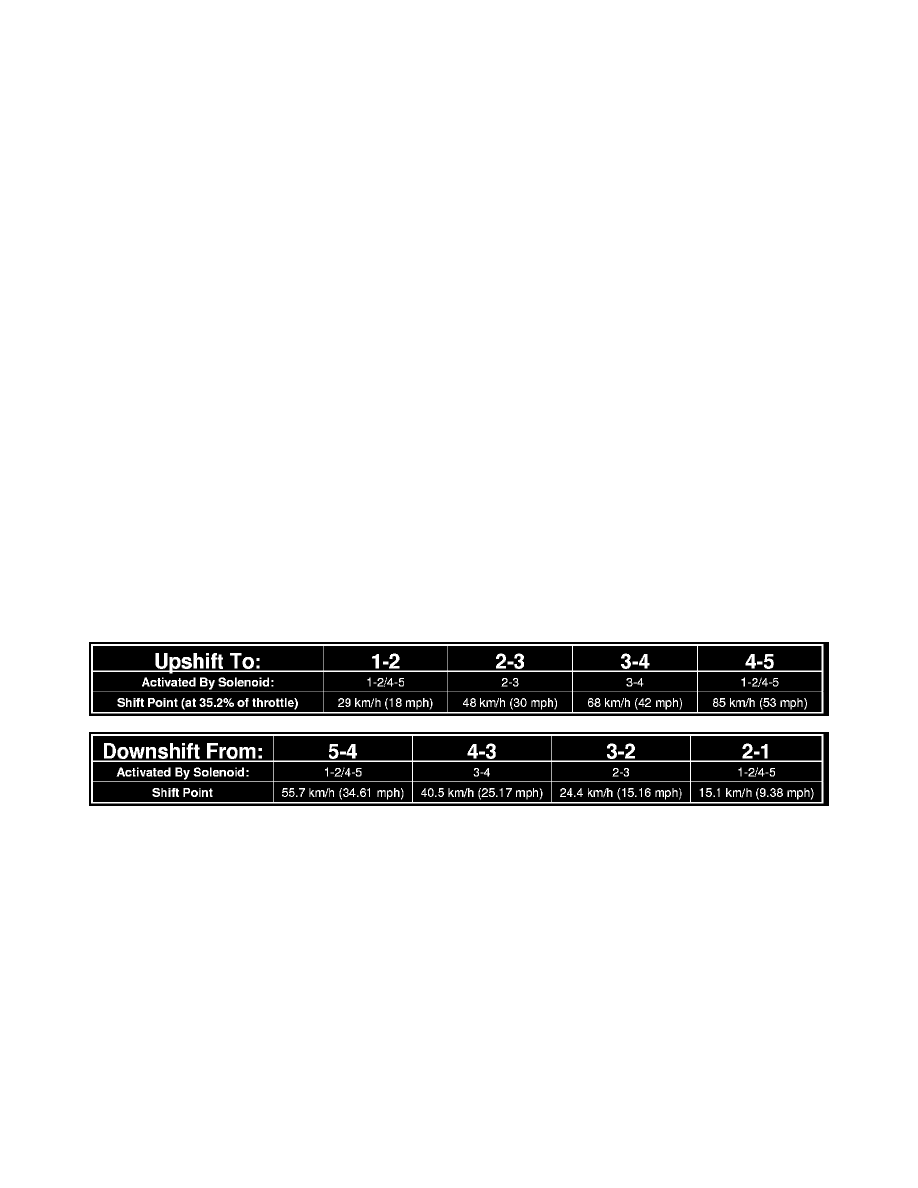Challenger V8-5.7L (2010)

A 2.5-volt bias (operating voltage) is present on the CAN bus any time the ignition switch is in the RUN position. Both the TCM and the ABS apply this
bias. On this vehicle, the CAN bus is used for module data exchange only. The indirect inputs used on the NAG1 electronic control system are:
-
Wheel Speed Sensors.
-
Transfer Case Switch Status.
-
Brake Switch.
-
Engine RPM.
-
Engine Temperature.
-
Cruise Control Status.
-
Gear Limit Request.
-
Throttle Position - 0% at idle, 100% at WOT. If open, TCM assumes idle (0% throttle opening).
-
Odometer Mileage
-
Maximum Effective Torque.
-
Engine in Limp-In Mode/Mileage Where DTC Was Set.
BRAKE TRANSMISSION SHIFT INTERLOCK (BTSI)
The BTSI solenoid prevents shifting out of the PARK position until the ignition key is in the RUN position and the brake pedal is pressed. The TCM
controls the ground while the ignition switch supplies power to the BTSI solenoid. The PCM monitors the brake switch and broadcasts brake switch
status messages over the CAN C bus. If the park brake is depressed and there is power (Run/Start) to SLA, the BTSI solenoid deactivates. The TCM
monitors this for the SLA because the SLA does not communicate on the CAN bus.
SHIFT SCHEDULES
The basic shift schedule includes up and downshifts for all five gears. The TCM adapts the shift program according to driving style, accelerator pedal
position and deviation of vehicle speed. Influencing factors are:
-
Road Conditions.
-
Incline, Decline and Altitude.
-
Trailer Operation, Loading.
-
Engine Coolant Temperature.
-
Cruise Control Operation.
-
Sporty Driving Style.
-
Low and High ATF Temperature.
DOWNSHIFT SAFETY
Selector lever downshifts are not performed if inadmissible high engine rpm is sensed.
ADAPTATION
To equalize tolerances and wear, an automatic adaptation takes place for:
-
Shift Time.
-
Clutch Filling Time.
-
Clutch Filling Pressure.
-
Torque Converter Lock-Up Control.
Adaptation data may be stored permanently and to some extent, can be diagnosed.
Driving Style Adaptation
The shift point is modified in steps based on the information from the inputs. The control module looks at inputs such as:
